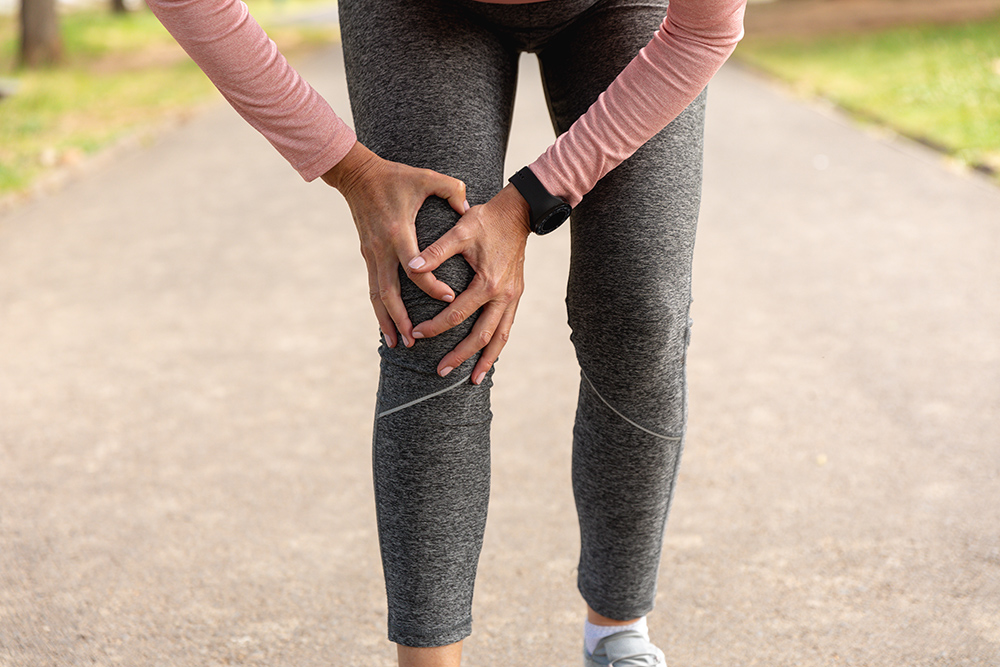Contents
Have you started to notice more aches and pains as you’ve gotten older? Has it gotten harder to stay asleep at night, or have you started to lose your overall energy and strength? Many seniors start to feel like these health issues are beyond their control. Fortunately, there’s a lot you can do to maintain your fitness, your strength and your energy.
If you haven’t lifted weights in a long time, or ever in your life, you might be thinking — “Why start now?” Doing a full weight training workout today is likely to leave you with more aches and pains tomorrow. But it’s OK to start slow. If pumping iron in the gym isn’t for you, there are other ways to work weight training into your routine. And if you never get up and try it, you won’t get to experience the benefits of weight training for yourself.
Before you start any exercise regimen, you should talk with your doctor about the risks. Heavy resistance training isn’t for everyone, and some exercises can be dangerous, especially if you do them alone. Find out what kinds of exercises are safe and unsafe for you. Your doctor may also recommend some dietary changes to help your body build muscle and stay energized.
This article lists eight health benefits of weight training for seniors.
How is weight training helpful for seniors?
Weight training is an important part of a well-rounded wellness regimen, even for seniors over 70. Many people start to notice a loss of muscle mass and strength in their senior years. This is called sarcopenia, and it has a major effect on your overall energy and vitality. Some seniors without serious health concerns still experience chronic pain, arthritis pain or back pain. Weight training helps you maintain muscle mass and function to keep you feeling strong. You’ll be more likely to maintain your mobility and independence if weight training is a part of your weekly routine.
At this age, your risks for conditions like stroke, heart disease, dementia and arthritis increase significantly. Weight training on its own can help you keep your risks as low as possible. It also helps you maintain a healthy weight.
8 benefits of weight training for seniors
Your weight training regimen probably won’t look anything like a younger person’s routine. That’s OK! People with different ages, body types and lifestyles will benefit from different exercises at different intensities. No workout is too short or too easy to really “count” for your health. Anything is better than nothing at all.
Still not convinced? Seniors who do weight training at least two to three times per week enjoy these eight health benefits:
- Maintaining muscle mass and strength — Staying in shape helps you feel young and strong. Weight training just a couple of times a week will help you maintain muscle mass and strength. Physical strength is the basis for other important body functions, like your immune system.
- Preserving bone density — Seniors who aren’t physically fit have a higher risk of osteoporosis. With reduced coordination and balance, falls can cause serious injuries. Weight training can help you keep your bones strong so you’re less vulnerable to accidents and broken bones.
- Maintaining mobility and independence — If your body is like a machine, weight training is the fine-tuning that sustains your balance, coordination and strength. You’ll have more energy and greater abilities to keep doing the things that make your life meaningful.
- Reducing the signs and symptoms of chronic diseases — At this age, your risk for heart disease, arthritis, type 2 diabetes and other diseases goes up. Your age is something you can’t control, but you can choose to stay strong by adding some weight training to your routine.
- Improving sleep — It can be harder to fall asleep or stay asleep as you get older. Exercise is one of the best sleep aids you can get, and it doesn’t have to cost you anything. You’ll enjoy deeper sleep and wake up feeling refreshed.
- Reducing depression and risk of dementia — You may find that you have to do more to maintain brain health as you age. Along with diet and challenging your brain daily, exercise can also help you keep depression and dementia at bay.
- Maintaining a healthy weight — If you struggle to keep your weight in a healthy range, weight training could be the missing piece. It multiplies the effects of regular cardiovascular exercise and a healthy diet.
- More energy and vitality — It might be obvious by now, but weight training pays off in every area of your life. If you want to feel more youthful and energetic, it’s worth a try.
Make weight training a part of your routine
Exercising after a few months or several years without doing it is tough. Maybe you don’t have any athletic clothes in your closet anymore. And packing a bag and going to the gym is an effort in itself. But getting started is the hardest part. When you start doing it regularly, your body will thank you!
It’s a good idea to start out with a trainer or a physical therapist for guidance and supervision. They can help you start at the right intensity and create a weight training plan. A great physical therapist will cheer you on while working at your pace. You may discover that you like getting outside your day-to-day environment — going to a facility comes with some social benefits. Working with a physical therapist or going to group classes can help you feel like part of a community.
If going to the gym isn’t for you, a physical therapist can help you find ways to work some resistance into your routine. They can help you learn tai chi or yoga sequences to do on your own. Wearing a weighted vest or backpack when walking is another great way to boost your strength without spending time in the gym.
Here are some more ideas on weight training outside the gym:
- Do a few arm curls and lifts with heavy grocery items while you’re putting them away.
- Do conditioning exercises while you’re watching TV: Start with pushups, situps, squats and wall sits.
- Buy some resistance bands or free weights to use at home.
- Walk up steep hills or stairs.
- Wear a heavy backpack when you go walking.
- Find yoga or tai chi videos on YouTube.
- If you live near water, rowing can be great for upper body strength.
- If you have an exercise bike, set it to a high resistance for 30 seconds at a time and slowly increase your intervals.
- Ask your friends what they’re doing to stay fit and see if you can exercise together.
We help seniors with safe weight training at Lattimore PT
Are you curious about getting started with weight training? We can help. At Lattimore PT, our physical therapists are passionate about helping people stay fit at any age. They’re patient with people who are new to weight training, and your PT will be there to keep you safe during workouts.
Our physical therapists are also skilled with manual therapy, aquatic therapy and other treatments that can help reduce your pain and build flexibility while you’re getting started. Over 30 of our PTs have a Certification in Orthopedic Manual Physical Therapy (COMT). That means they have specialized training in evaluating and treating musculoskeletal issues with hands-on techniques.
Learn more about our fitness center today. Ready to get started? Contact our team today to set up your first session.



